Transforming Local Communities Through the Power of the Arts
By Jenny Monahan
It’s naive to imagine that the swish, swish, flick of a wand could turn an economically depressed, post-industrial town into a thriving neighborhood. But the transformative power of the arts to revitalize a community seems — indeed — almost magical.
Three local projects are underway in Pittsburgh, all focused on reanimating abandoned spaces. Though two are in former churches and the third is a retired steel works, they share a common element: Their futures will involve the creative arts as a means to reinvigorate the community.
They share something else in common, too. Each project has included a consultation with graduate students from Carnegie Mellon University’s Heinz College of Information Systems and Public Policy in the Master of Arts Management, Public Policy and Management and Public Policy and Data Analytics programs.
The Carrie Film Furnace
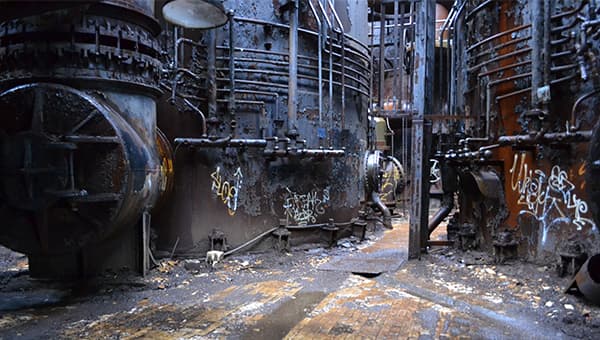
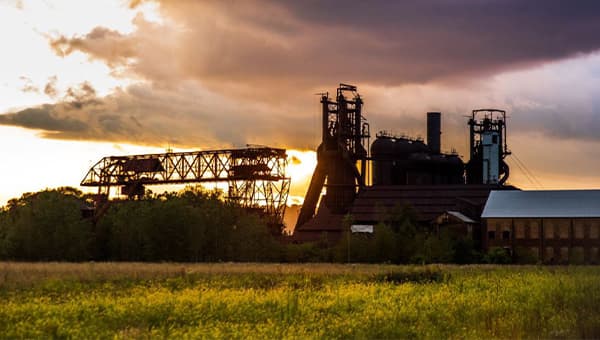
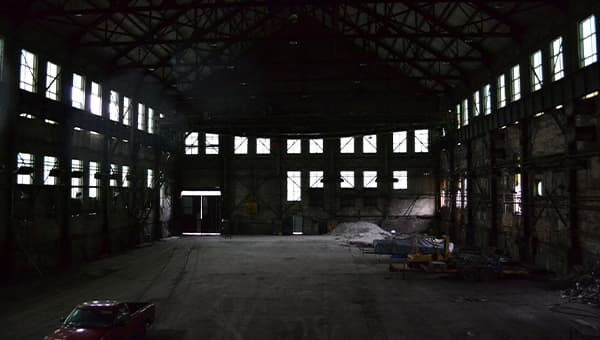
Plans to redevelop U.S. Steel’s Carrie Blast Furnace site that once employed thousands of workers in Rankin, Swissvale and Braddock have been batted around for decades following the industry’s collapse in the 1970s and 1980s. With the October 2022 groundbreaking, funding to complete the first two buildings in 2023, and infrastructure work underway, community leaders who have long worked and hoped for transformation are finally seeing progress.
The project, a joint venture involving the Pittsburgh Film Office (PFO) and the Regional Industrial Development Corporation (RIDC), was first conceived in 2013. The vision includes mixed development with sound stages, office space, hotels and retail outlets and increases studio space to host companies who want to film in and around Pittsburgh.
The student team from CMU entered the scene in 2019 when they were asked to complete a feasibility study on the project’s potential for success.
Project manager and Heinz College Class of 2020 graduate Haley Nordeen says that one of the most important contributions her team made was to compile and analyze large quantities of data from years of tax forms and tax credit submissions. The work provided students with the insight to offer a key recommendation: The project would only be successful in luring more work from the film and television industry if Pennsylvania legislators increased the state cap on tax credits and guaranteed a multi-year commitment for those credits.
A second key component of the report was the team’s recommendation to develop workforce pipelines. Community transformation had to be about more than real estate, it had to include viable jobs for people in local neighborhoods.
Phase one of the project involves the construction of two large buildings on the Carrie Furnace site in Rankin, a tech-flex space and two purpose-built sound stages, which PFO Director Dawn Keezer believes will be instrumental in attracting entertainment industry projects.
“The impact is going to be more money spent in the region’s economy,” Keezer says. “The impact is going to be more jobs for local residents.”
Keezer wants to ensure that skilled workers are ready to fill those jobs as grips, electricians and film hairstylists through the PFO’s workforce training programs, which are educating their third cohort.
“The focus is on diversifying the industry from behind the camera, in partnership with the union,” Keezer explains. “It’s a direct pathway to union membership, to the jobs that will be happening at the Film Furnace in Rankin. These are family-sustaining jobs that include full benefits.”
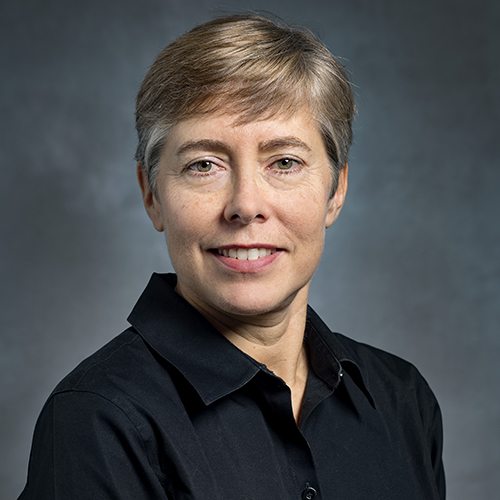 “For Wilkinsburg, the goal was to create a space where the local artists would have a place to perform for community members, a place for the community to connect while drawing in people new to the neighborhood as music and art are public goods.”
“For Wilkinsburg, the goal was to create a space where the local artists would have a place to perform for community members, a place for the community to connect while drawing in people new to the neighborhood as music and art are public goods.”
Brett Crawford, associate teaching professor of arts management
Heinz College of Information Systems and Public Policy
The Mulberry Project
When completed, the main sanctuary of the historic Mulberry Second Presbyterian Church in Wilkinsburg will be used as a midsized performance venue. It is only one of four performance spaces in the 55,000 square-foot landmark civic center. The space is expected to attract local musicians, which in turn will draw audiences into the business district who can avail themselves of Wilkinsburg’s dining and shopping spots.
The facility also includes a 24- classroom education wing to be occupied by three women-led nonprofits — a Spanish immersion school, a wraparound program for single mothers and the Center for Civic Arts (CfCA).
The CfCA, whose mission is to transform neglected cultural assets that drive grassroots community development, is the conservator of the landmark building. CfCA’s founder and director Jody Guy approached Heinz College for help in 2018. Her inquiry led her to CMU’s Brett Crawford, faculty chair of the Master of Arts and Entertainment Management programs and associate teaching professor of arts management, to partner on a systems synthesis project, a kind of capstone experience for graduate students. The student team was charged with creating a sustainable business plan for the church renovation — one that would incorporate the Wilkinsburg community’s desire to use the building as a performing arts space.
The team’s research was extensive and included consultation with community members and borough leaders as well as delving into the area’s demographic, health and economic data. Students discovered that it is quite common to use former churches as performing arts spaces.
“Whether in D.C., Maryland or California, these organizations serve artists and the community in unique ways,” Crawford explains. “For Wilkinsburg, the goal was to create a space where the local artists would have a place to perform for community members, a place for the community to connect while drawing in people new to the neighborhood as music and art are public goods.”
Artist Residency at Saints Peter and Paul Church
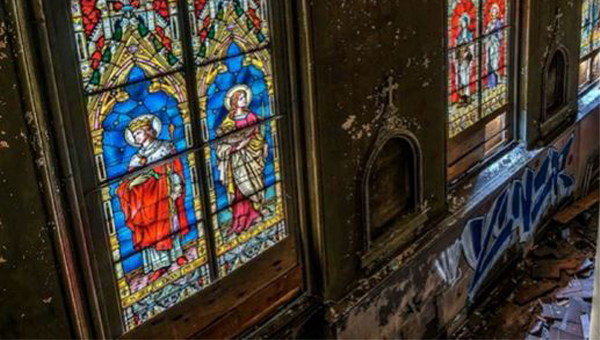
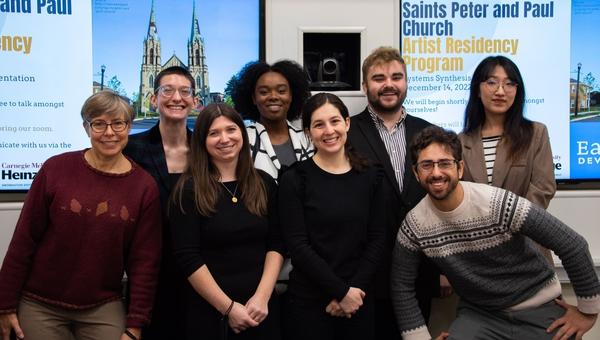
The renovation project at Saints Peter and Paul Church in East Liberty already had a business plan in place when Skip Schwab of East Liberty Development, Inc. (ELDI) connected with Heinz College students to partner on a systems synthesis project in 2022.
“(East Liberty residents and local preservationists) were pretty clear that we wanted this to be a multiuse space for events, large concerts and small arts groups, so that became the concept. The problem was figuring out the economics,” Schwab explains.
Local arts groups expressed a need for rehearsal space and a black box theater, so ELDI developed a plan that would answer these diverse needs and be financially viable. Schwab reached out to Crawford to help ELDI better understand the economic landscape related to arts organizations.
“It started to come together, this idea that you could have flexible-use space in the church, and that ultimately led to the idea of an artist-in-residence program,” Schwab says.
The student team (pictured above with Crawford) was charged with creating an artist residency program structure that supports diversity, equity, accessibility and inclusion. Their final report laid out a comprehensive framework for how to support artists in residence, the makeup of selection committees, the application process, budget considerations, staffing and physical space needs.
“It was phenomenal,” Schwab says. The depth of experience and strength of analysis the students brought to the project surprised him, and the quality of their work has helped to validate the project.
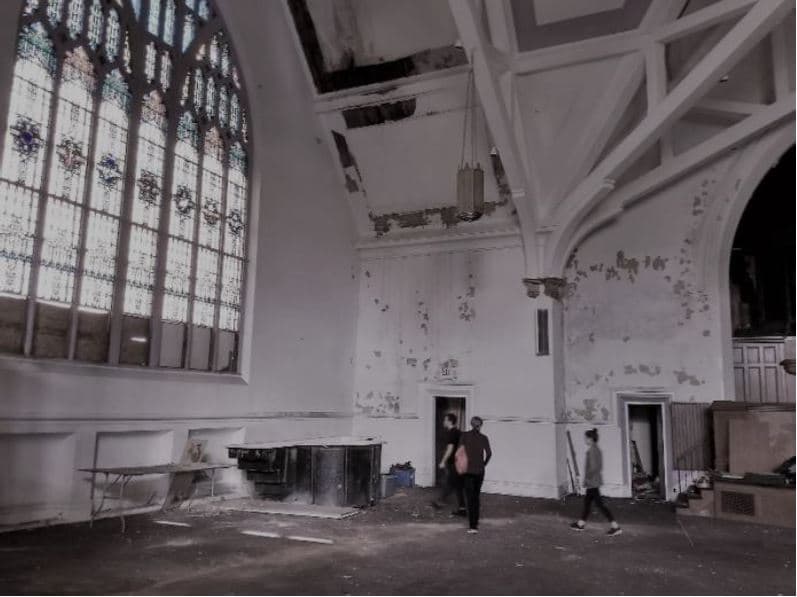 Heinz College students evaluate the interior of Mulberry Second Presbyterian Church.
Heinz College students evaluate the interior of Mulberry Second Presbyterian Church.